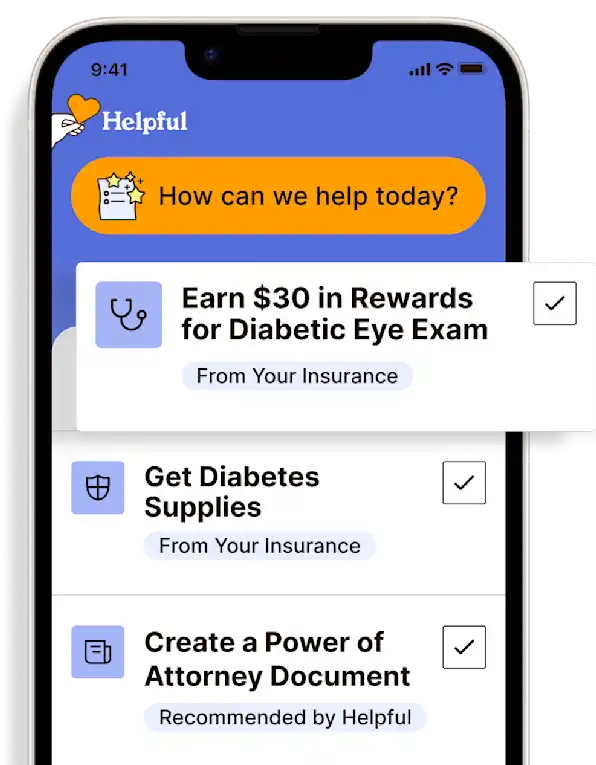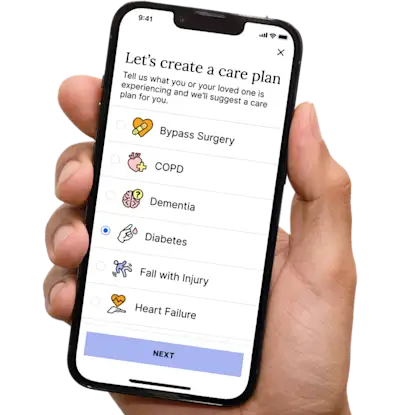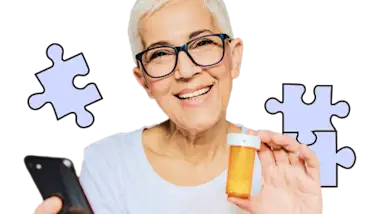VNS Health EasyCare Plus: Cardiac Rehabilitation Services (Cardiac Rehab)
Cardiac rehab reduces the chance of death in the 5 years after a heart attack or bypass by about 35%. It also improves heart failure status and outcomes.
Access all my benefitsGet insurance benefits, legal documents, and medical records in one place
How To Receive
Details on how to apply
It is likely that the network hospital will have arranged for prior authorization for cardiac rehab prior to Phase 1 (while inpatient).
If authorization is uncertain, Contact the VNS Health EasyCare Plus Team at (866) 783-1444 (TTY 711) with questions.
Obtain a network cardiologist clearance and order to engage in Phase 2 cardiac rehab following discharge from the hospital (outpatient).
Schedule an initial appointment at a network facility selected by the network cardiologist.
Attend the initial appointment and schedule ongoing sessions.
Attend additional sessions, as scheduled.
If transportation is needed to and from the appointment:
Call (877) 718-4219 (TTY: 711), M-F 8am-8pm, at least 48 hours in advance of the needed transportation.
Have the date, time, location, and reason for transportation ready when calling.
Receive authorization and guidance on scheduling the transportation service.
Get confirmation of scheduled transportation.
Use the transportation service to and from the appointment.
Get more support and guidance on insurance benefits, medical records and legal forms.
Helpful brings together your insurance benefits, legal documents, and medical records in one personalized place — so you always know what you have, and never have to search again.

Cardiac rehab is a physician-supervised program designed to improve cardiovascular health following a major cardiac event or existing chronic cardiac condition. It is defined by the World Health Organization (WHO) as “The sum of activity and interventions required to ensure the best possible physical, mental, and social conditions so that patients with chronic or post-acute cardiovascular disease may, by their own efforts, preserve or resume their proper place in society and lead an active life.”
Comprehensive cardiac rehab programs and services include exercise, education, and counseling. Intensive cardiac rehab programs contain the same elements as traditional cardiac rehab programs but are typically more rigorous or more intense. These services are covered when administered in a physician’s office or hospital outpatient setting. Some cardiac rehab is moving into the community and even home-based settings.
There are three defined phases to cardiac rehab: the clinical phase (1), outpatient cardiac rehab (2), and post-cardiac rehab (3).
Phase 1 begins in the inpatient setting soon after a cardiovascular event or completion of a cardiovascular intervention and includes assessment, education, physical therapy, and discharge planning. There is usually a 3-6 week recovery period between Phase 1 and Phase 2, where healing and Phase 1 learning reinforcement occur (prior to cardiology clearing the patient for Phase 2).
Phase 2 occurs once a patient is stable and cleared by cardiology to begin outpatient cardiac rehab, where the exercise, education, and counseling begin. Cardiac rehab is typically scheduled 2-3 days per week for about 3 months but can range anywhere from 2 to 8 months. Attendance determines how long it will take to finish the program. Those who attend regularly, as scheduled, tend to complete the program sooner.
Phase 3 is achieved when Phase 2 is successfully completed and involves more independence and self-monitoring, focused on increasing flexibility, strength, and aerobic conditioning.
Those who qualify for cardiac rehab:
Heart attack within the last 12 months
Coronary artery bypass surgery (CABG)
Current stable angina
Heart valve repair or replacement
Coronary angioplasty or stent
Heart or heart-lung transplant
Stable chronic heart failure (HF or CHF)
Cardiac rehab is significantly underutilized, despite strong evidence that it supports immediate and long-term target health behaviors and lifestyle changes, producing higher quality of life outcomes.
Technology for Health Tasks. Mental Health for the Tough Stuff.
Helpful connects your medical records, insurance, and caregiving tasks automatically. And when you need more than logistics, a therapist is here to guide you.
In-Network and Covered
For Individuals, Couples and Families
HIPAA Compliant, Data Stays Private


Healthcare Tasks Simplified

From syncing records to spotting drug interactions, Helpful does the heavy lifting, turning complex health info into clear tasks and showing you benefits you can actually use, giving you clarity and control over your care.

In-Network Mental Health

Our licensed therapists are here to support you and your loved ones through stress, burnout, and life’s hardest moments, with an inclusive, compassionate approach that works with most insurance plans.

Create Legal Documents

Plan ahead by creating will, trusts, advance directives and more, that ensure your wishes are honored in the event you can’t speak for yourself -with Helpful guiding you every step of the way.